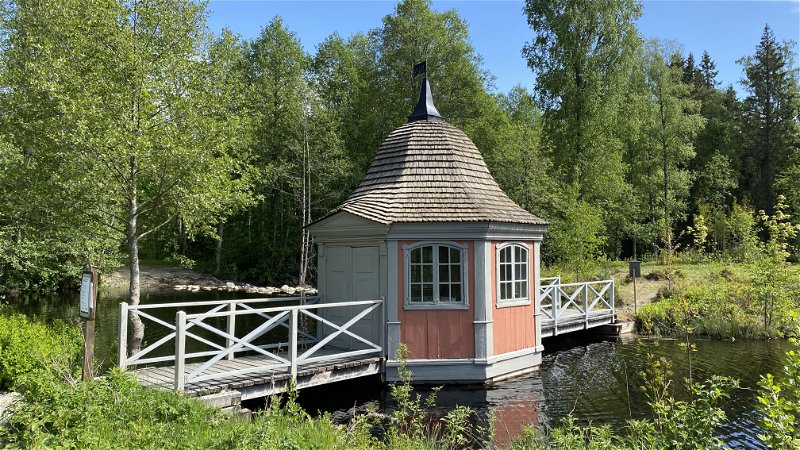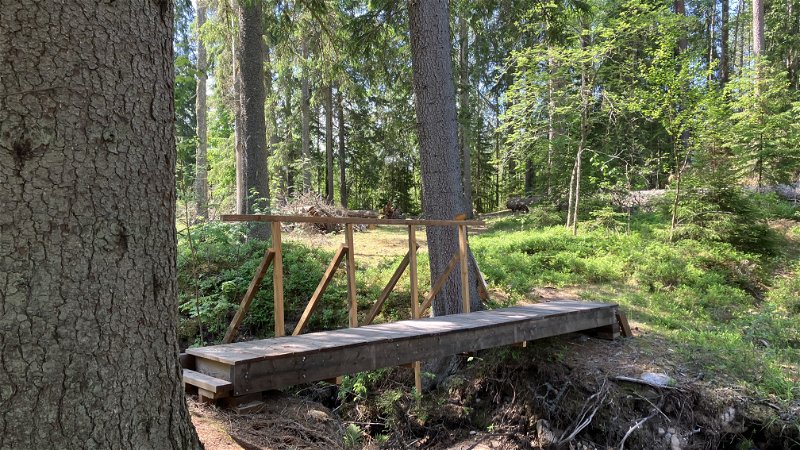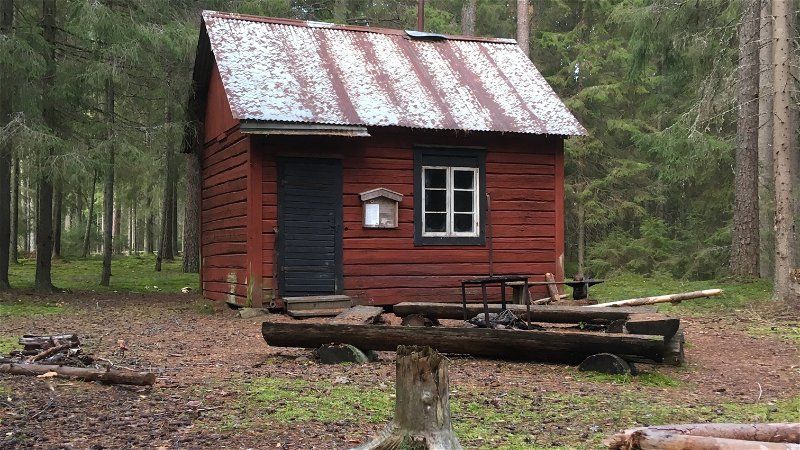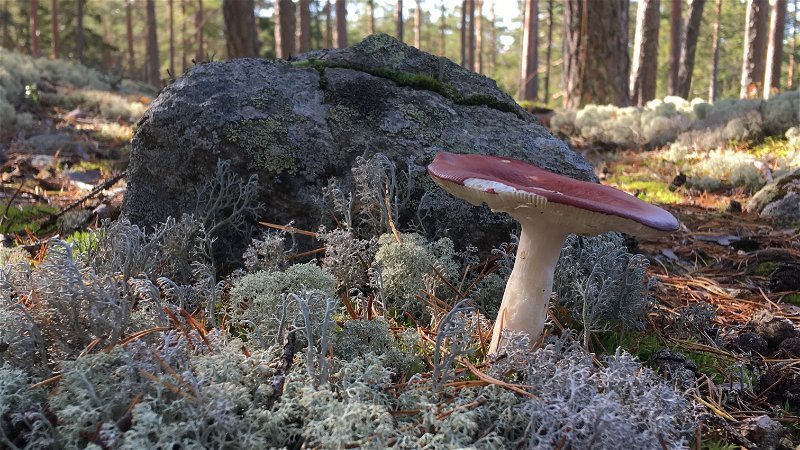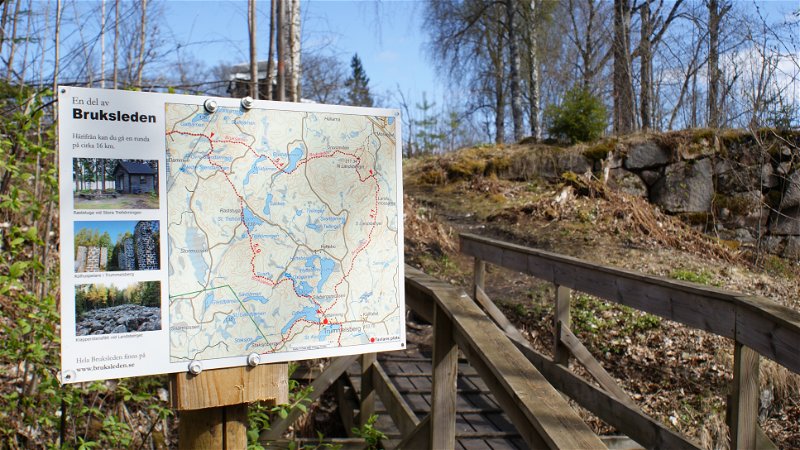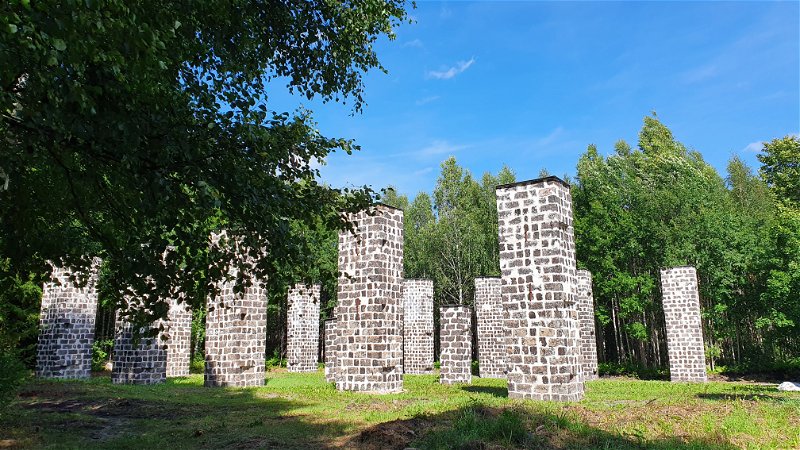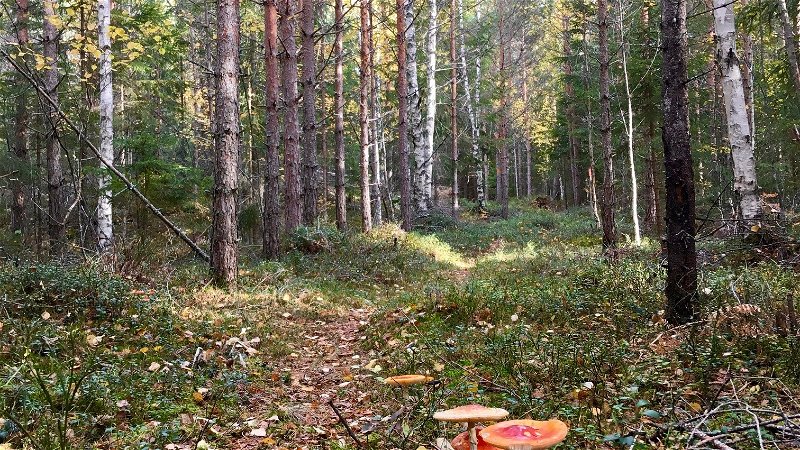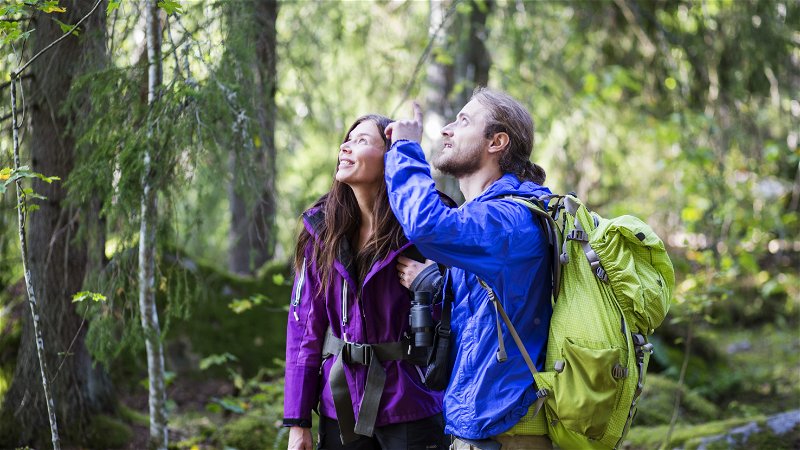The entire hike up to the stage goal at Borntorpet outside Skinnskatteberg goes through forest terrain with elements of bogs and other wetlands. The trail follows mostly paths but also goes a short distance on forest roads. The landscape is not particularly hilly. But be prepared for some short sections in the forest to be a little steeper.
The stage starts at the beautiful place Bockhammar where you can visit Ebba Brahe's gazebo or have a coffee at the summer open café. From the shelter, the trail continues southwest through varying forest terrain.
The trail passes on paths south of Bastusmossen, which is a complex with varying poor marshes and moss vegetation. Here you will also find Lake Bastus, a typical bog lake where you can find white water lily and pike perch.
One kilometer after the bog, you come down a steep hill to a small red log cabin in the middle of the forest. The cottage was built in the late 1920s and the first person to live here was Anders Eriksson, also known as Älg-Erik. Today, the cabin is open to anyone who wants to stay overnight or take a break.
After the cottage, the trail follows an easy path, and then a gravel road, through the forest to the stage finish at the Borntorpet conference center. Borntorpet is beautifully situated by Lake Stora Gattjärnen. There is a possibility to stay overnight here.
REST AREAS
At the starting point of the stage at Bockhammar there is a shelter on a hill in the deciduous forest a short distance from the road. TC is adjacent to the shelter. The terrain is poorly suited for camping.
Älg-Erik's cabin is an overnight cabin located along the trail, about 1.5 km before Borntorpet. The red cabin is located in a forest clearing where there is also plenty of space to pitch a tent. Inside the cabin there are bunk beds with room for at least six people. Outside, there is a fireplace with benches and a TC.
BOCKHAMMAR
Bockhammar is an old mill area. A mill was established here in 1607 and its history is closely associated with Ebba Brahe. She was the owner of the mill for a long time, which she inherited from her father Magnus Brahe.
There were three hammers with five hearths at Bockhammar's mill, and for a time there was also a smelter. In 1770, Bockhammar was incorporated into Färna Mill, and just over a hundred years later the mill was closed down.
Today, all that remains is a timber-framed farmhouse from 1817 and, the most famous building in Bockhammar, Ebba Brahe's gazebo. The gazebo is beautifully situated down by the river. On the roof is a wind vane where you can read the text "Ebba Brahe's pavilion".
EBBA BRAHE'S GAZEBO
Ebba Brahe's rose-painted gazebo is located on a small island in the mill pond at Bockhammar. According to the wind vane on the roof, the gazebo was built in 1636, making it the oldest in the country. Inside there are beautiful decorative paintings.
Ebba Brahe was a countess. At the age of 15, she became a lady-in-waiting to the newly widowed Queen Christina. Kristina's husband, King Karl IX, was succeeded by their son Gustav (II) Adolf, who was then 17 years old. King Gustav Adolf soon fell in love with the beautiful Ebba Brahe. Their relationship can be partly followed through a preserved correspondence. In 1613, the king wrote a letter containing a formal proposal.
Queen Dowager Christina opposed the love affair for political reasons. She wanted to see the king married to a German princess. Her stubborn opposition persuaded Gustav Adolf to renounce love. In 1615, he went into battle and that was the end of the romantic relationship. Three years later, Ebba Brahe married the count and commander Jakob De la Gardie. They had a long marriage and Ebba became the mother of no less than 14 children. One of them was Magnus Gabriel De la Gardie. King Gustav Adolf married Maria Eleonora of Brandenburg. When the king died in 1632, their only child, daughter Kristina, was 5 years old.
SKINNSKATTEBERG
Skinnskatteberg is located in a beautiful spot between the upper and lower lakes of Vättern. Skinnskatteberg is an old mill community with a mill that operated from 1626 until 1909. In the 1600s there were 3 hammers here, and by the middle of the 1700s the number had increased to 24. Slag piles and wall remains today show where the iron production sites were located.
In Skinnskatteberg you can see the beautiful manor house, which is considered one of the most stately in the country. It was built in the latter part of the 18th century by mill owner Wilhelm Hising after drawings by Eric Palmstedt. In 1934, the building was purchased by Domänverket and since 1944 it has been used by the forestry school. In Skinnskatteberg there are seven other manor houses preserved. This is more than in any other municipality in Sweden.
Near the manor house is the church. It is said to have been built on the pilgrims' resting place. Every year the monks from Arboga walked past here on their pilgrimage to Nidaros.
Another attraction is the homestead, built in 1860 as a workers' residence. It is located on the old mill site next to Hedströmsbron. Sweden's oldest log boat is stored in Hembygdsgården. It was built in the 7th or 8th century and was probably used in connection with hunting and fishing or for prospecting for bog ore.
OTHER ACCOMMODATION
In Bockhammar there is the possibility of accommodation at Stallkarlsgården.
Borntorpet is a conference facility located by Lake Stora Gattjärn. Here you can rent rooms for a short overnight stay or for a longer stay. Next to the facility there are jogging tracks and large grass areas.
Try a different kind of hostel. About 2 km south of Borntorpet at Skärsjön is the charcoal village. Here you stay in charcoal huts located in the middle of the magical Bergslag forest. Each hut has a fireplace and sleeping places. From Borntorpet there is a path down to Kolarbyn.
If you want to know more about accommodation in Skinnskatteberg municipality, go to the link below.
OTHER ACCOMMODATION
At Bockhammar there is a café that serves coffee and homemade bread. The café is open during the summer and a bit into the fall.
Under the accommodation link above there is also information about where you can eat in Skinnskatteberg.
READ MORE
Directions
There is no bus connection to Bockhammar.
You can park your car at Borntorpet.
From Borntorpet you can walk about 1 km out to road 233 where bus no 500 stops. The bus runs on the Köping - Skinnskatteberg - Fagersta - Norberg - Avesta route. The bus runs once an hour on weekdays but less frequently on weekends.

